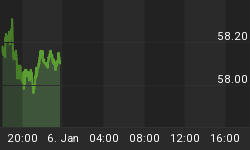 "False" Diversification May Prove Costly In 2007
"False" Diversification May Prove Costly In 2007
"Every great mistake has a halfway moment, a split second when it can be recalled and perhaps remedied."
Pearl S. Buck (1892-1973)
The quote above is not meant to suggest that we need to prepare for gloom and doom in the new year, but to remind us that in 2007 the investment markets will not necessarily behave as they did in 2006. Bull markets have a tendency to make us forget about the benefits of true asset class diversification. Since we are now into year five of the current bull market in U.S. stocks, it may be a good time to take a moment and check on your portfolio's asset class correlations. It is not uncommon to find what I call "false" diversification in what appears to be a well-diversified portfolio.
The Concept of "False" Diversification
Let us assume we have a somewhat typical, well-intentioned investor who has a real job and a real life outside of the financial markets, which limits his or her ability or desire to follow the financial markets on a daily basis. This typical investor understands the need to be diversified or to "spread out" the risk in their investment portfolio. To illustrate the concept of "false" diversification, we will also assume that this investor has growth as their primary investment objective. This profile fits many investors between the ages of 20 and 55 (still at least 5 years from retirement). In a genuine attempt to diversify, our typical growth investor builds the following investment portfolio allocation giving them exposure to a wide variety of asset classes and management strategies:
Table 1
Large Cap Index Fund | 14% |
Balanced Fund | 14% |
Large Cap Growth Fund | 10% |
Value Stock Growth Fund | 15% |
Growth Stock Fund | 14% |
Mid Cap Growth Fund | 5% |
Small Cap Growth Fund | 5% |
Technology Fund | 5% |
International Growth Stock Fund | 5% |
International Value Stock Fund | 5% |
Emerging Markets Growth Fund | 3% |
European Stock Fund | 5% |
Total | 100% |
This investor may have a false sense of security thinking that they are diversified and therefore, protected against incurring significant losses in their portfolio. Below are the bear market returns with dividends reinvested for actual investments (either mutual funds or ETFs) that fit the investment allocation profile above. Mutual funds with a good performance record vs. their peers were used in order not to skew the results in a negative fashion. The investments below are listed in the same order as the allocation above.
Table 2
| S&P 500 Index ETF | SPY | -46.01% |
| Fidelity Balanced | FBALX | -16.14% |
| Fidelity Large Cap Stock | FLCSX | -51.95% |
| Putnam New Value | PANVX | -18.86% |
| ING Growth | AEGRX | -61.77% |
| Janus Enterprise | JAENX | -75.35% |
| Fidelity Adv Small Cap | FSCIX | -45.25% |
| NASDAQ 100 ETF | QQQQ | -79.61% |
| T. Rowe Price European Stock | PRESX | -44.84% |
| MFS International Value | MGIAX | -31.38% |
| Templeton Developing Markets | TEDMX | -28.74% |
| AIM European Growth | AEDAX | -44.69% |
| Average Weighted Return | -42.49% |
Figure 12
For those of you who prefer ETFs, you could build a similar portfolio with false diversification using the S&P 500 ETF (SPY), Blackrock Core Bond Trust (BHK), Vanguard Large Cap ETF (VV), Vanguard Value ETF (VTV), Vanguard Mid Cap ETF (VO), Vanguard Small Cap Growth ETF (VBK), Blackrock Global Opportunism (BOE), and the Vanguard European ETF (VGK).
It seems reasonable to believe that twelve different growth investments would offer some type of downside protection in a difficult period for U.S. stocks. If you are like many investors, the current bull market has lulled you into thinking that you are diversified. The "diversified" portfolio above would have declined by 42.29% during the bear market. During the same period, the S&P 500 declined by 46.01% (as measured by the dividend reinvested performance of the S&P 500 ETF).
The fact that the investments above all declined when the S&P 500 declined and that they declined in similar magnitude tells you all these investments have a high positive correlation to the S&P 500. A high positive correlation means when the S&P 500 goes up, all the investments tend to go up and when the S&P 500 goes down, all the investments tend to go down. Now you can see why the term "false diversification" applies.
Research shows that there may be a better way to build a portfolio of investments that offers "real" diversification and an opportunity for improved returns. In an effort to better prepare for 2007 and beyond, I recently conducted some extensive research on the potential benefits of investing in a wide array of asset classes, including some with low or negative correlations to U.S. stocks. Since the study, Protecting Your Wealth From Inflation And Investment Losses, is lengthy and somewhat tedious, I will attempt to summarize what the historical numbers tell us in future articles. While there are several ways to successfully approach the investment markets, I feel we can all gain some advantage from reviewing how different asset classes performed in both bull and bear markets. As time permits, I will continue to expand on these topics in the coming weeks.
Potentially impacted stocks and ETFs: SPY, QQQQ, VV, VTV, VO, VBK, BHK, BOE, VGK.
Happy New Year!
















